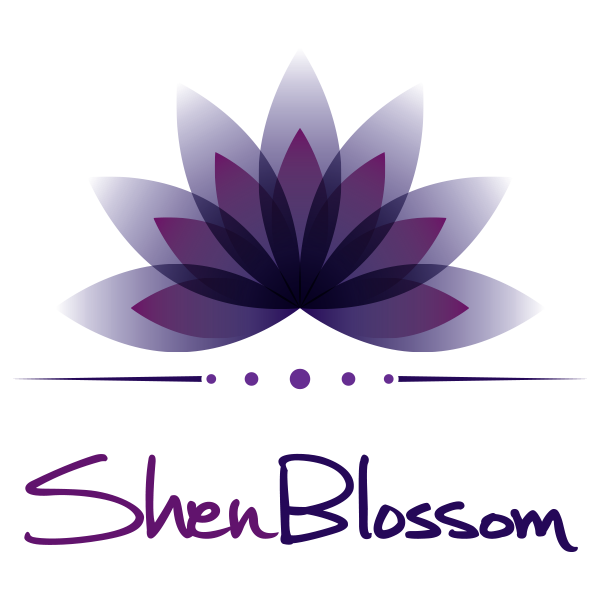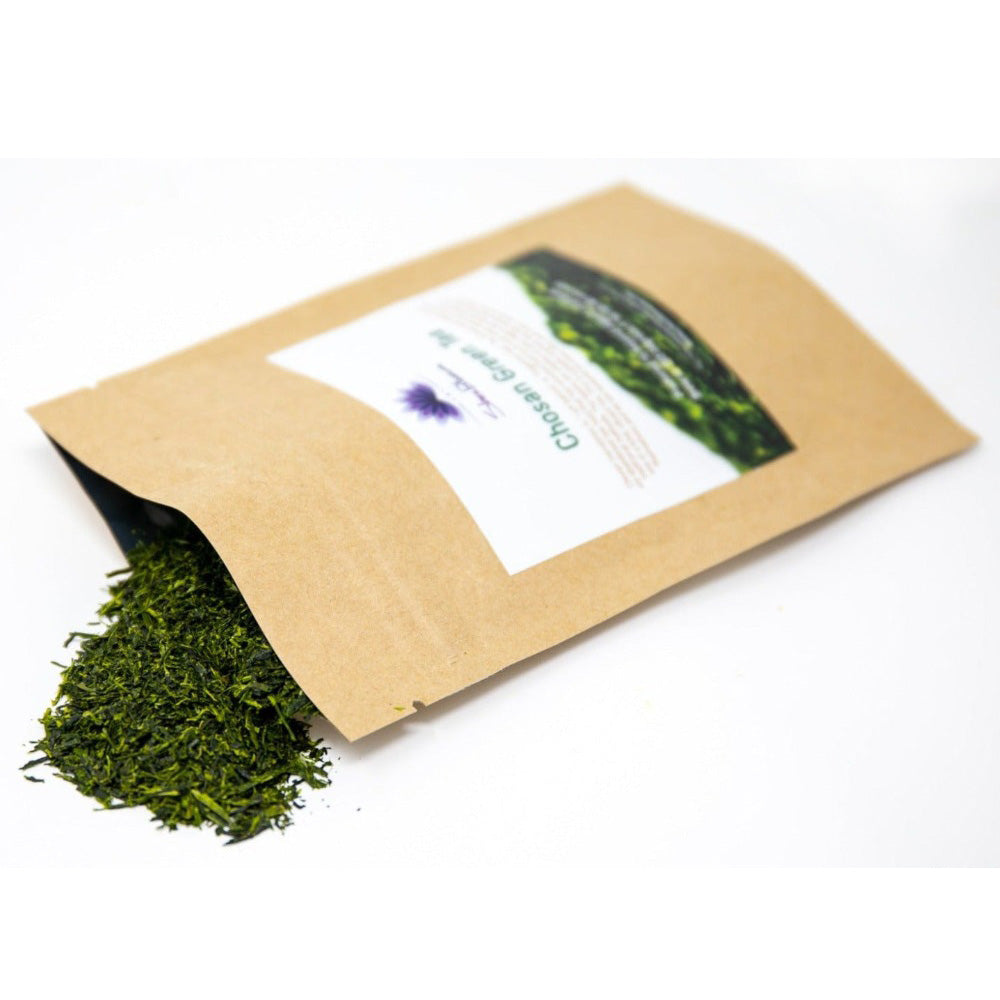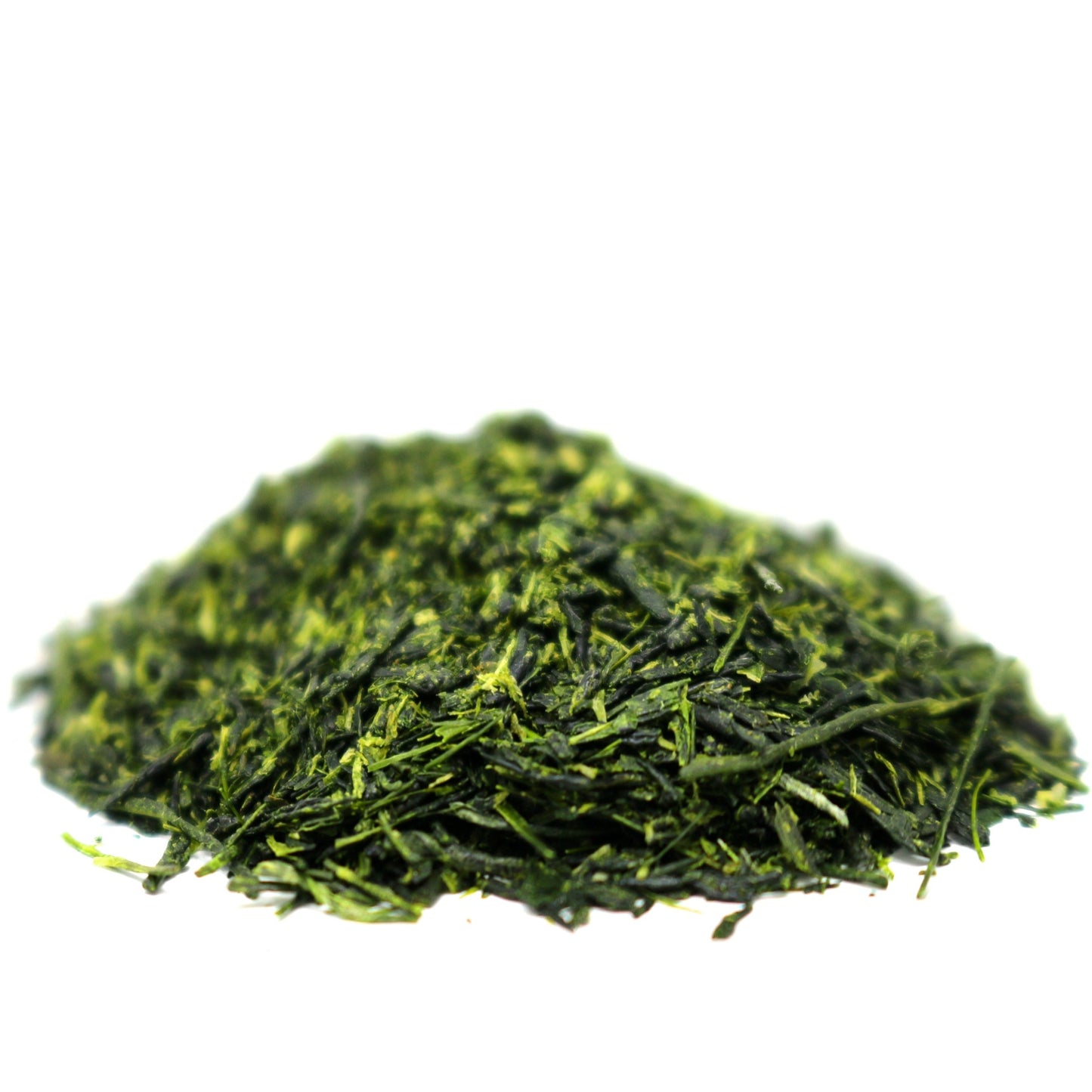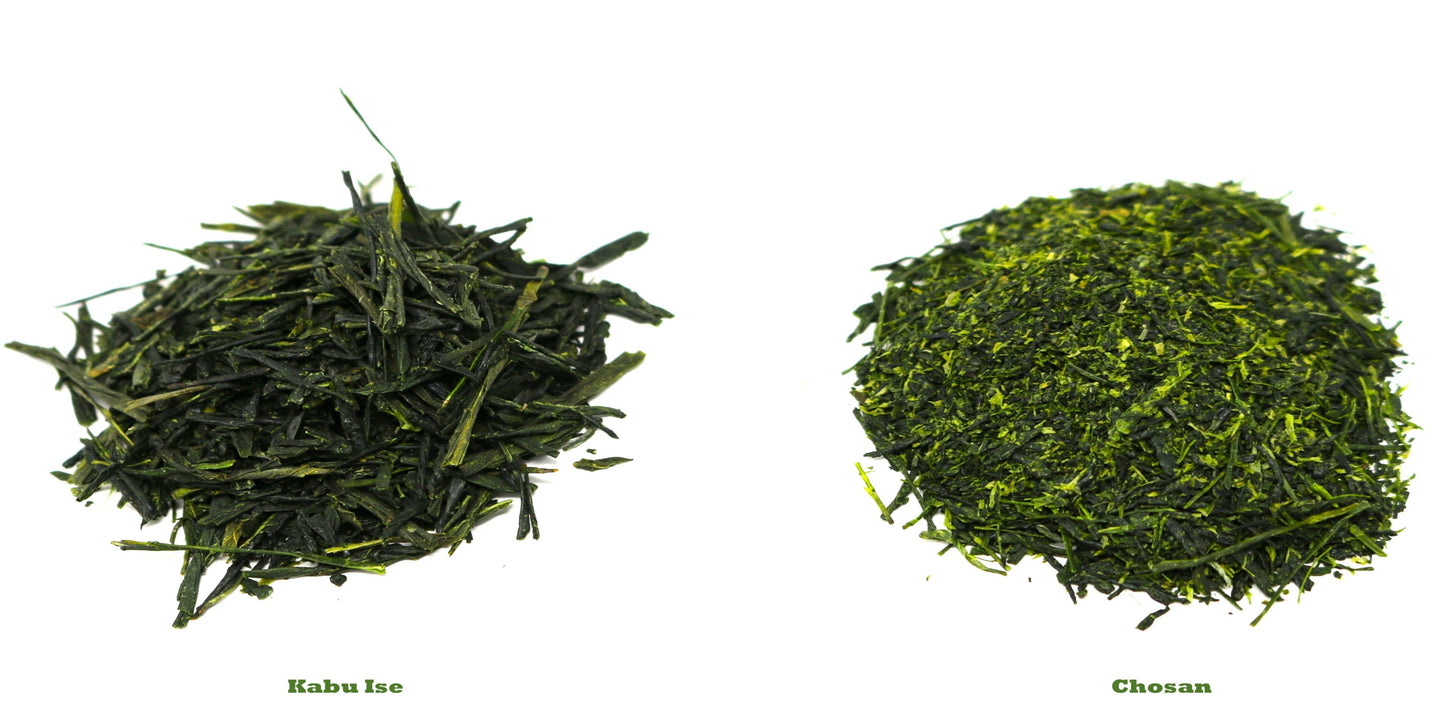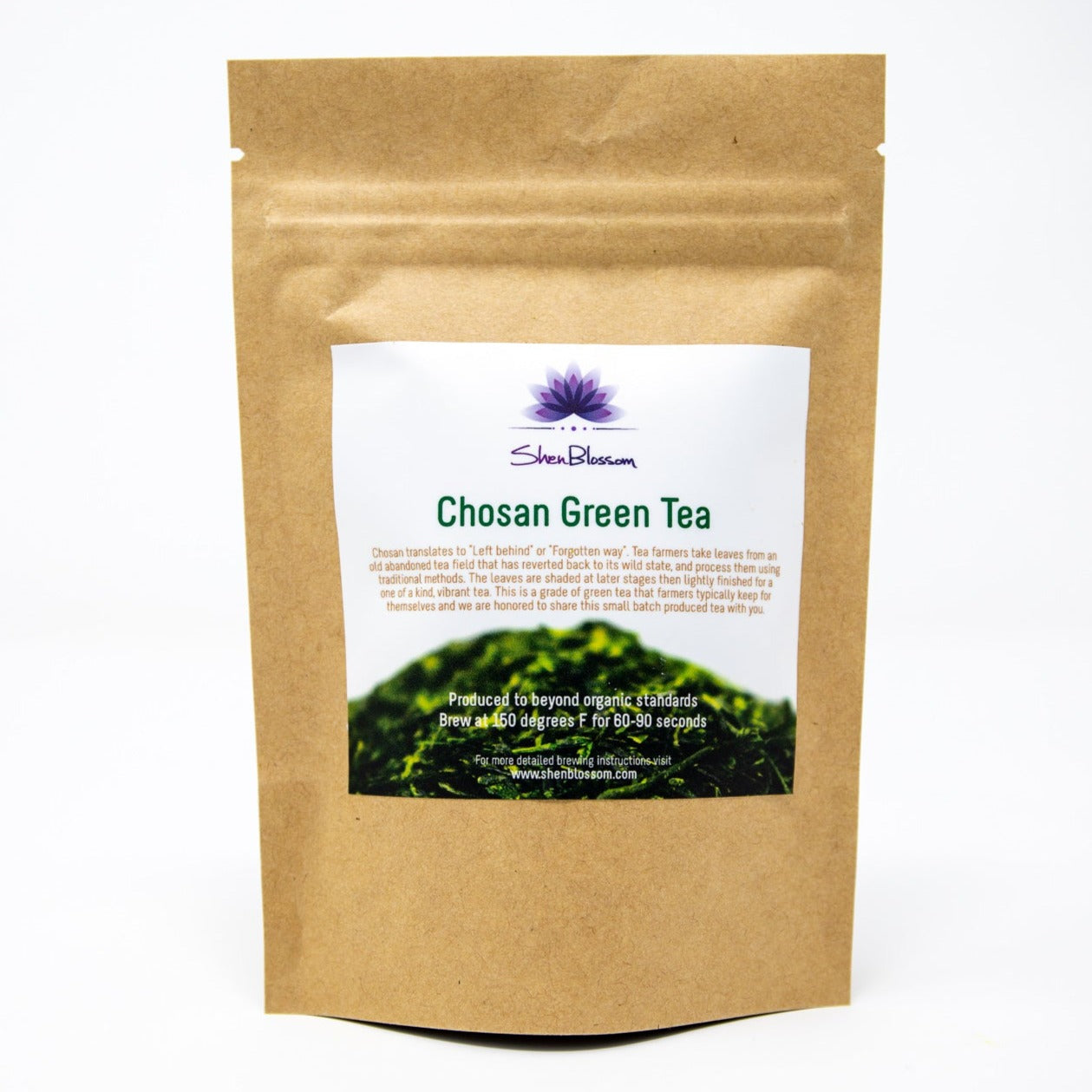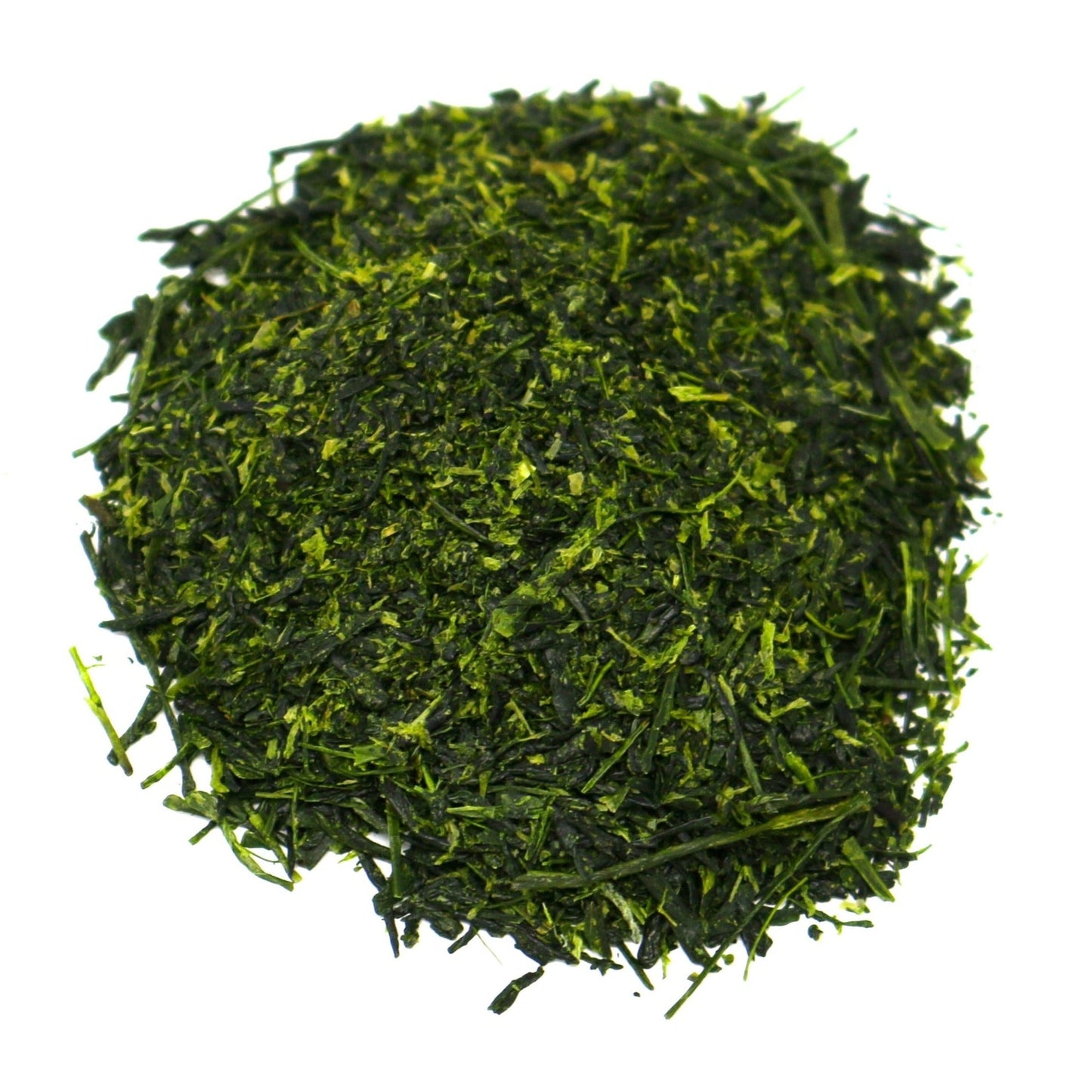Our Chosan Green Tea comes from a prefecture where artisans have been growing, harvesting, and preparing green tea for generations.
Chosan can be translated as "left behind" or "forgotten way". Tea farmers harvest leaves from an old abandoned tea field that has reverted back to its wild state, and process the tea leaves using traditional techniques that impart a unique flavor while maintaining the essence of the wild leaves.
3-4 weeks prior to harvesting the leaves, the farmers shade the leaves (and the ground around the trees) in order to change the chemistry of the plant, causing the tea plant to produce substantially more nutrients.
The Chosan preparation method imparts tearing the leaves in a specific way to reduce energy loss in the leaf, giving the leaves a "shredded" look.
Below is a comparison between our Kabu Ise from this prefecture and our Chosan.

This type of tea is very rare, and not typically available to the general public.
You simply have to taste this tea to appreciate its complexity and mood enhancing qualities.
Green tea is a historic tonic that is known to fortify, uplift, and protect the brain. It strengthens immune function and is an excellent source of antioxidants and polyphenols, which protect the cells of the body and the skin.
Green tea, when produced in this fashion also contains significant amounts the amino acid L-theanine. L-theanine helps relax the body and mind, which in turn sharpens concentration, improves alertness, and really helps to boost the mood.
SINGLE TREE SOURCED
With all the Japanese teas we offer (Gen Mai, Kabu Ise) from this prefecture, they are not only organic and single origin source, they are also harvested and processed so all the leaves in each bag comes from the same tree. Often, suppliers are aggregating tea leaves from many different trees from different locations that are observed, graded, and segregated into different batches based on desired qualities.
Plants are similar to the human body in that they continually self regulate to keep themselves strong and healthy. They do this by pulling nutrients from the soil and selectively allocating what part of the tree (root, limbs, stems, leaves) are to receive the nourishment in order to keep the tree strong and healthy as a whole. By drinking tea made with leaves from the same tree, you are obtaining a more well rounded nutrient profile that yields a completely different tea drinking experience than you may be accustomed to.
This is more like consuming a formula versus taking isolated extracts in the balance of nutrients and energetic effects of the tea.
The Kabu Ise is shaded for the last couple weeks before harvesting which helps to increase L-theanine levels and to brighten the flavor, creating a flavorful broth-like cup with a sweeter character and clean finish.
IMPORTANT BREWING INSTRUCTIONS
All of the Japanese green teas we offer are brewed in a similar fashion.
Take a small palm full of tea (approximately 1 teaspoon) and add to one of our tea infuser cups or teapots.
Heat your water to 150 degrees and steep for 1 minute with the lid off. It is very important not to heat the water too high for these delicate teas. If you do heat your water higher than 150 degrees, steep the tea for less time to compensate.
After steeping for 60 seconds, cover the tea with your lid and pour your tea.
Kabu Ise will yield 3 steepings, and it is advised to eat the tea afterwords. It actually has an enjoyable taste and is very medicinal when eaten.
You can actually judge the quality of a tea by chewing and eating a couple dried leaves.
Each package contains 50g of premium tea.
